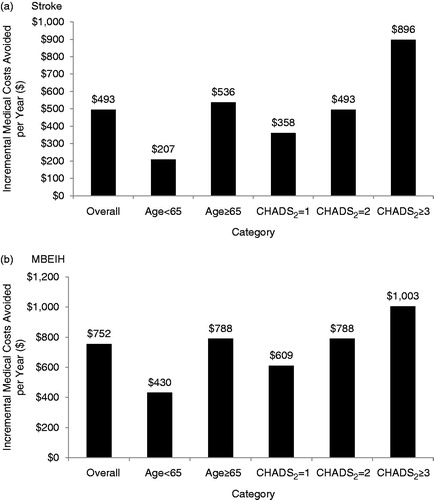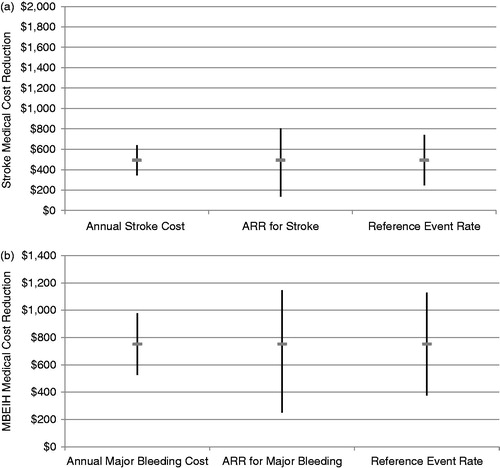Figures & data
Table 1. Relative risk and cost inputs for stroke and major bleeding (excluding intracranial hemorrhage) outcomes.
Table 2. Baseline characteristics of NVAF patients from the Medco database compared with patients from ARISTOTLE.
Table 3. Stroke and major bleeding (excluding intracranial hemorrhage) event rates per 100 person-years of follow-up for NVAF patients during warfarin exposure: Real-world clinical practice (Medco population) vs ARISTOTLE.
Table 4. Estimated number of stroke and major bleeding (excluding intracranial hemorrhage) events avoided per 100 years of follow-up in actual clinical practice with apixaban vs warfarin.
Figure 1. Incremental medical costs avoided per year with apixaban vs warfarin in real-world clinical practice for (a) stroke and (b) major bleeding excluding intracranial hemorrhage outcomes, overall and by age, CHADS2 scores. Note: Incremental 1-year cost of stroke = $42,792, incremental 1-year cost of major bleeding = $35,829, costs adjusted to 2011 values using the medical care component of the CPI, Medical costs avoided = incremental 1-year cost of event × number of events avoided per year. MBEIH, major bleeding excluding intracranial hemorrhage.

Figure 2. Univariate sensitivity analyses examining the influence of variations in the absolute risk reduction, incremental event costs, and reference event rates on the medical cost reductions associated with avoiding (a) stroke and (b) major bleeding excluding intracranial hemorrhage events for apixaban relative to warfarin. Note: Annual cost of event varied from −30% to +30%, ARR varied using the ranges of the 95% confidence intervals of event rates from ARISTOTLE, reference event rate varied from −50% to +50% from baseline values calculated from the Medco database. ARR, Absolute Risk Reduction.
